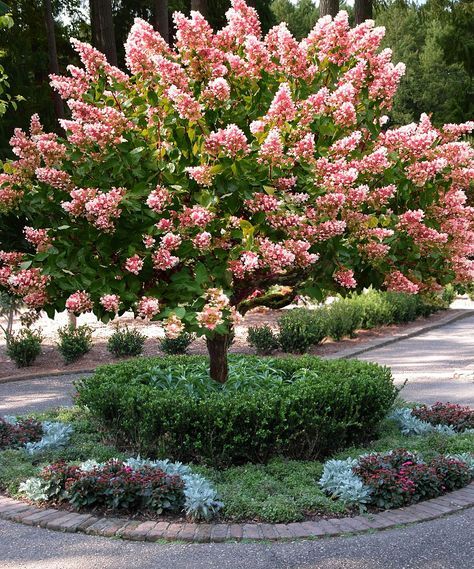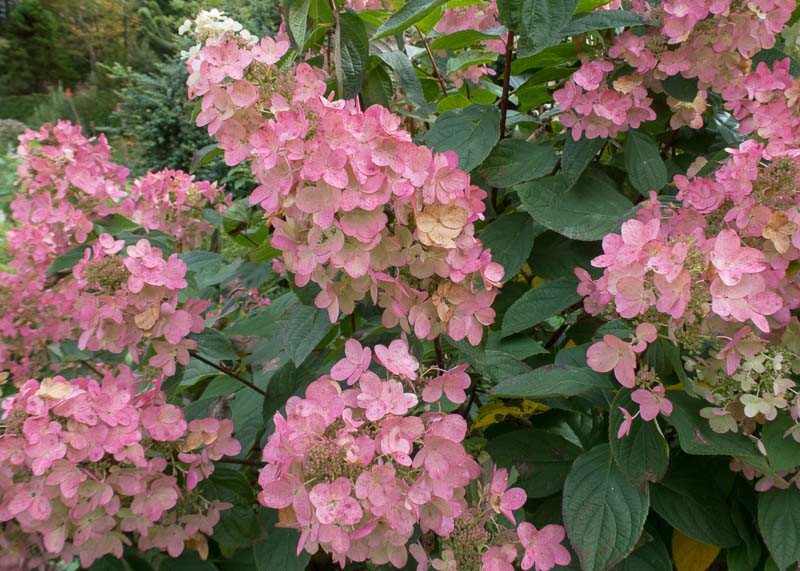Pink Diamond Hydrangeas: The Ultimate Guide To Growing And Caring For These Stunning Flowers
Pink Diamond Hydrangeas are a type of mophead hydrangea that is known for its large, showy blooms. The flowers are typically a deep pink color, but they can also be white or blue depending on the soil pH. Pink Diamond Hydrangeas are a relatively easy plant to grow, but they do require some basic care.
In this blog post, we will provide an overview of the Pink Diamond Hydrangea, including its appearance, growing requirements, and care. We will also discuss some tips for troubleshooting common problems.
Appearance
Pink Diamond Hydrangeas are a large shrub or small tree that can grow up to 15 feet tall. The leaves are oval-shaped and dark green. The flowers are borne in large, conical panicles that can reach up to 6 inches in diameter. The flowers are typically a deep pink color, but they can also be white or blue depending on the soil pH.
Growing Requirements
Pink Diamond Hydrangeas prefer full sun to partial shade. They need well-drained soil that is rich in organic matter. The soil pH should be between 5.5 and 6.5. Pink Diamond Hydrangeas are drought-tolerant once established, but they should be watered regularly during the first year after planting.
Care
Pink Diamond Hydrangeas need to be pruned in the spring. Pruning should be done before the plant blooms. The goal of pruning is to shape the plant and remove any dead or diseased branches. Pink Diamond Hydrangeas can also be fertilized in the spring with a balanced fertilizer.
Troubleshooting
The most common problem with Pink Diamond Hydrangeas is chlorosis. Chlorosis is a condition that causes the leaves to turn yellow. It is caused by a lack of iron in the soil. To correct chlorosis, you can apply an iron chelate fertilizer to the soil.
Another common problem with Pink Diamond Hydrangeas is leaf spot. Leaf spot is a fungal disease that causes small, brown spots on the leaves. To prevent leaf spot, you can water the plant in the morning so that the leaves have a chance to dry before nightfall. You can also apply a fungicide to the plant.
Conclusion
Pink Diamond Hydrangeas are a beautiful and relatively easy-to-grow plant. With proper care, they will provide you with years of enjoyment.
If you're looking for a hydrangea that will add a touch of elegance to your garden, look no further than the pink diamond hydrangea. This stunning shrub produces large, conical clusters of flowers that start out white and gradually turn pink as they mature. The flowers are borne on strong stems and can reach up to 12 inches in length. Pink diamond hydrangeas are hardy in zones 4-8 and can grow up to 6-8 feet tall and 5-6 feet wide. They prefer full sun to partial shade and moist, well-drained soil.
If you're interested in learning more about pink diamond hydrangeas, I recommend visiting Garden Wiki. This website has a wealth of information about this beautiful plant, including its history, care requirements, and pest and disease management. You can also find photos of pink diamond hydrangeas in bloom, as well as tips on how to plant and care for them in your own garden.
FAQ of pink diamond hydrangea
1. What is a pink diamond hydrangea?
A pink diamond hydrangea is a type of hydrangea that is known for its large, pink flowers. It is a relatively new variety of hydrangea, having been introduced in the early 2000s. Pink diamond hydrangeas are hardy in USDA zones 5-9 and can grow to be about 10 feet tall and wide. They prefer full sun to partial shade and moist, well-drained soil.
2. How do I care for a pink diamond hydrangea?
Pink diamond hydrangeas are relatively easy to care for. They need to be watered regularly, especially during the hot summer months. They also benefit from being fertilized once a month during the growing season. In the fall, you should trim back the dead or damaged branches.
3. What is the best time to plant a pink diamond hydrangea?
The best time to plant a pink diamond hydrangea is in the spring or fall. If you live in a cold climate, you may want to wait until spring to plant, as the hydrangea may not be able to survive the winter if planted in the fall.
4. What are the different colors of pink diamond hydrangeas?
The flowers of pink diamond hydrangeas can vary in color depending on the acidity of the soil. In acidic soil, the flowers will be a deeper pink color. In alkaline soil, the flowers will be a lighter pink or even white. You can change the color of the flowers by adding aluminum sulfate to the soil if you want a deeper pink color.
5. What are some common pests and diseases that affect pink diamond hydrangeas?
Pink diamond hydrangeas are relatively resistant to pests and diseases. However, they can be susceptible to aphids, spider mites, and scale insects. You can control these pests with insecticidal soap or neem oil. Pink diamond hydrangeas can also be susceptible to leaf spot and powdery mildew. You can prevent these diseases by watering the plant at the base and avoiding overhead watering.
Image of pink diamond hydrangea
5 different images of "pink diamond hydrangea" from Pinterest:





Post a Comment for "Pink Diamond Hydrangeas: The Ultimate Guide To Growing And Caring For These Stunning Flowers"